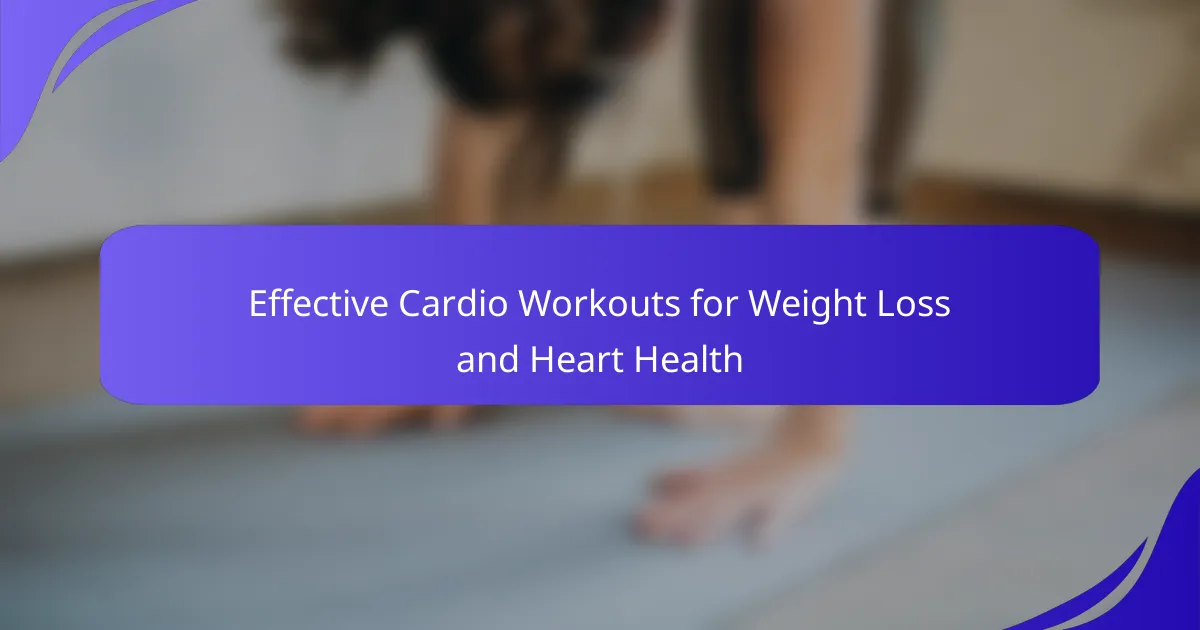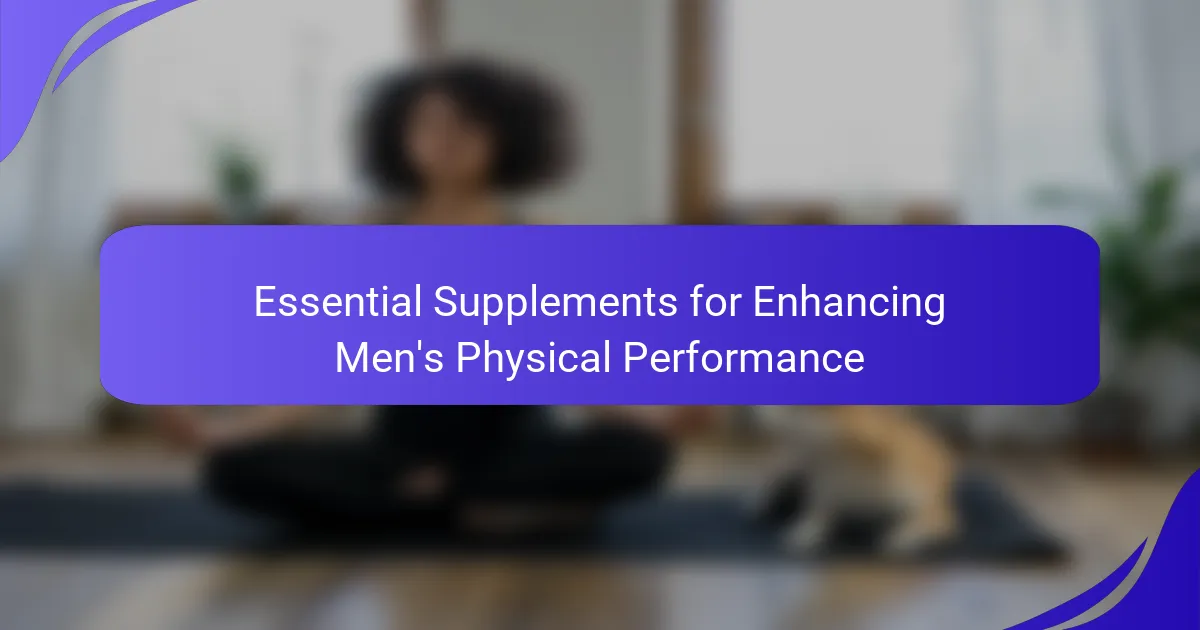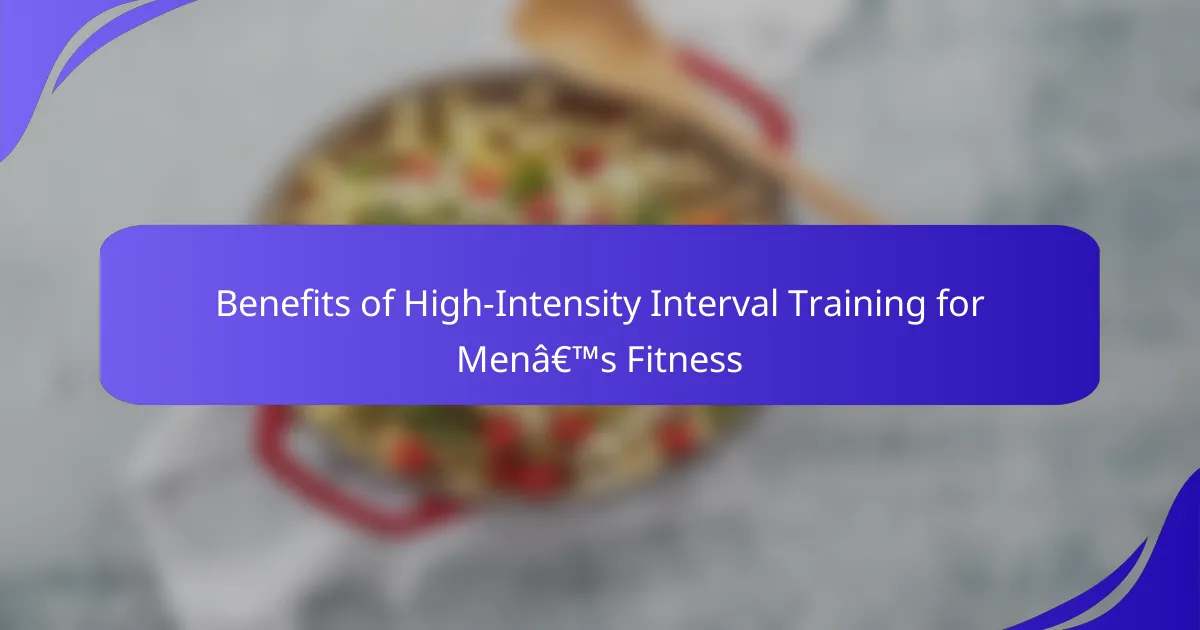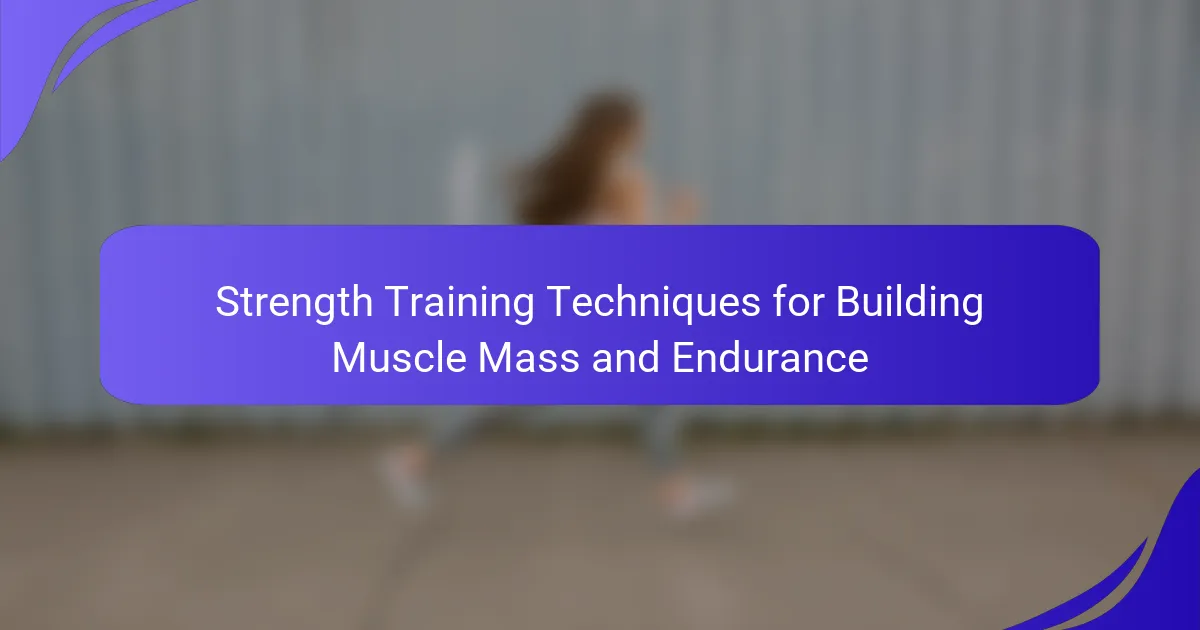Cardio workouts are essential for effective weight loss and heart health. They increase calorie burn, improve cardiovascular endurance, and reduce heart disease risk. This article explores various cardio methods, including high-intensity interval training and steady-state cardio, while considering regional preferences and strategies for optimizing workouts. Understanding these approaches can help individuals achieve their fitness goals more effectively.

What are the key benefits of cardio workouts for weight loss and heart health?
Cardio workouts significantly enhance weight loss and heart health. They increase calorie burn, improve cardiovascular endurance, and reduce the risk of heart disease.
Engaging in activities like running, cycling, and swimming promotes fat loss by elevating the heart rate. Regular cardio strengthens the heart muscle, improving blood circulation and lowering blood pressure.
Studies show that 150 minutes of moderate-intensity cardio weekly can lead to substantial weight loss and health improvements. Additionally, incorporating high-intensity interval training can yield faster results in both weight loss and heart efficiency.
In conclusion, cardio workouts are vital for achieving weight loss goals and maintaining a healthy heart.
How does cardio contribute to fat loss?
Cardio contributes to fat loss by increasing calorie expenditure and enhancing metabolic rate. Engaging in effective cardio workouts can lead to significant weight loss when combined with a balanced diet. High-intensity interval training (HIIT) is particularly effective, burning more calories in less time compared to steady-state cardio. Additionally, regular cardio strengthens the heart, improving overall cardiovascular health. This dual benefit makes cardio an essential component of any weight loss strategy.
What impact does cardio have on cardiovascular health?
Cardio workouts significantly improve cardiovascular health by enhancing heart efficiency and circulation. Regular aerobic exercise strengthens the heart muscle, reducing the risk of heart disease. Studies show that consistent cardio can lower blood pressure and cholesterol levels. As a result, individuals experience better oxygen delivery and overall heart function.
Why is consistency important in cardio workouts?
Consistency in cardio workouts is crucial for achieving weight loss and improving heart health. Regular exercise enhances cardiovascular endurance, boosts metabolism, and promotes fat loss. Studies show that individuals maintaining a consistent cardio routine are more likely to meet their fitness goals. Moreover, consistency helps establish a habit, making it easier to integrate workouts into daily life. As a result, individuals experience long-term benefits, including better heart function and weight management.
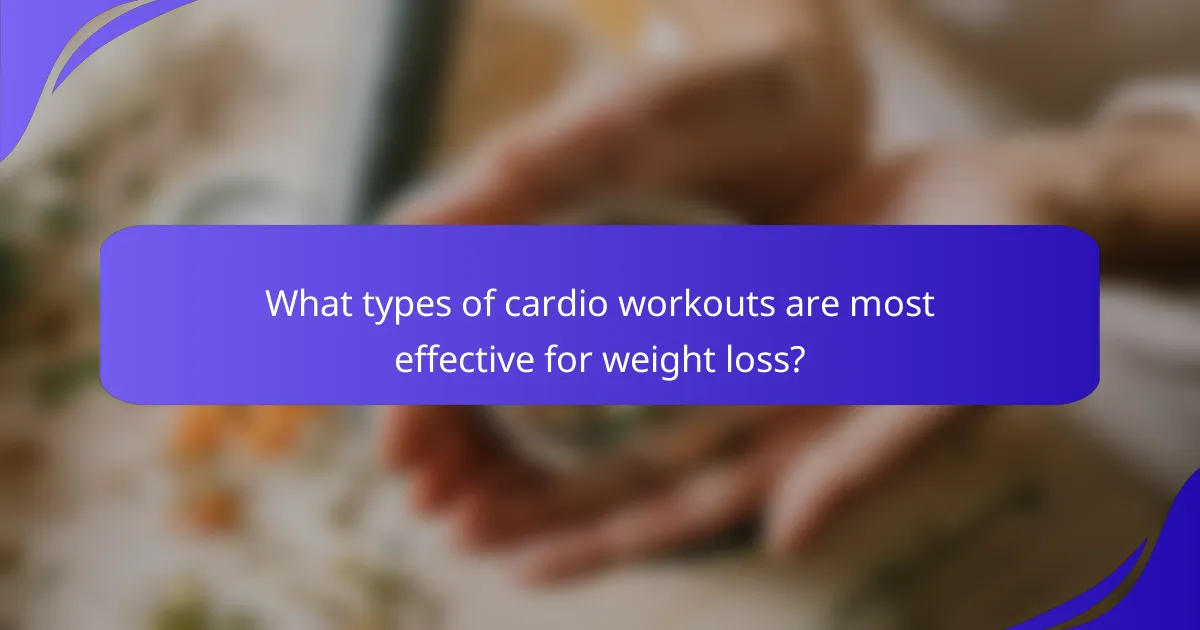
What types of cardio workouts are most effective for weight loss?
High-intensity interval training (HIIT) and steady-state cardio are effective for weight loss. HIIT burns more calories in less time, while steady-state cardio enhances endurance and fat oxidation. Both improve heart health and can be tailored to individual fitness levels. Incorporating a mix of both can maximize results and maintain motivation.
Which high-intensity interval training (HIIT) workouts are recommended?
High-intensity interval training (HIIT) workouts like Tabata, circuit training, and sprint intervals are highly recommended for effective cardio. These workouts boost metabolism, improve cardiovascular health, and can be completed in shorter durations. Tabata involves 20 seconds of intense exercise followed by 10 seconds of rest, repeated for four minutes. Circuit training combines multiple exercises targeting different muscle groups with minimal rest, enhancing overall fitness. Sprint intervals alternate between high-speed running and walking or jogging, effectively increasing endurance and fat loss.
What are some beginner-friendly HIIT routines?
Beginner-friendly HIIT routines include short bursts of intense exercise followed by rest. These workouts enhance weight loss and heart health.
1. 20/10 Tabata: Perform 20 seconds of high-intensity exercise, followed by 10 seconds of rest for 4 minutes.
2. Circuit Training: Combine bodyweight exercises like squats, push-ups, and burpees in a 30-second on, 30-second off format.
3. Sprint Intervals: Alternate between 30 seconds of sprinting and 1 minute of walking for 15-20 minutes.
4. Jump Rope: Skip for 1 minute, rest for 30 seconds, repeat for 10 rounds.
These routines are effective, easy to follow, and can be done at home.
How do steady-state cardio workouts compare?
Steady-state cardio workouts are effective for weight loss and heart health, but they differ in intensity and duration. These workouts involve maintaining a consistent effort over time, typically at a moderate intensity. Compared to interval training, steady-state cardio can enhance endurance and is easier to sustain for longer periods.
| Attribute | Steady-State Cardio | Interval Training |
|——————-|————————-|————————-|
| Intensity | Moderate | High |
| Duration | Longer sessions | Short bursts |
| Fat burning | Efficient over time | Higher post-exercise burn|
| Heart health | Improves steadily | Boosts VO2 max quickly |
| Accessibility | Suitable for beginners | Requires fitness level |
What are popular steady-state cardio exercises?
Popular steady-state cardio exercises include running, cycling, swimming, and rowing. These workouts maintain a consistent intensity, promoting fat burning and cardiovascular health.
Running can be done outdoors or on a treadmill, offering flexibility. Cycling is low-impact, suitable for various fitness levels. Swimming engages multiple muscle groups while being gentle on joints. Rowing provides a full-body workout, enhancing endurance and strength.

What unique attributes differentiate various cardio workouts?
High-intensity interval training (HIIT), steady-state cardio, circuit training, and dance-based workouts each offer unique attributes that enhance weight loss and heart health.
HIIT involves short bursts of intense exercise followed by rest, maximizing calorie burn. Steady-state cardio maintains a consistent pace, promoting endurance and fat oxidation. Circuit training combines strength and cardio, fostering muscle growth while improving cardiovascular fitness. Dance-based workouts incorporate rhythm and movement, making exercise enjoyable while burning calories effectively.
These variations cater to different preferences and fitness goals, ensuring a tailored approach to effective cardio workouts.
How do different cardio modalities affect calorie burn?
Different cardio modalities affect calorie burn significantly, with high-intensity workouts generally yielding higher calorie expenditure. Activities like running can burn approximately 600 calories per hour, while cycling may burn around 500 calories. Swimming offers a full-body workout that can also reach similar calorie burn rates. Factors such as duration, intensity, and individual metabolism play crucial roles in determining the exact calorie burn. For effective weight loss and improved heart health, incorporating a variety of cardio exercises is beneficial.
What role does equipment play in cardio effectiveness?
Equipment significantly enhances cardio effectiveness by providing support, resistance, and tracking capabilities. High-quality machines like treadmills and ellipticals improve workout intensity and reduce injury risk. For instance, heart rate monitors help maintain optimal training zones, ensuring maximum calorie burn and cardiovascular benefits. The unique attribute of adjustable resistance in stationary bikes allows users to customize workouts for varied fitness levels. Consequently, investing in the right equipment can lead to more efficient weight loss and improved heart health.
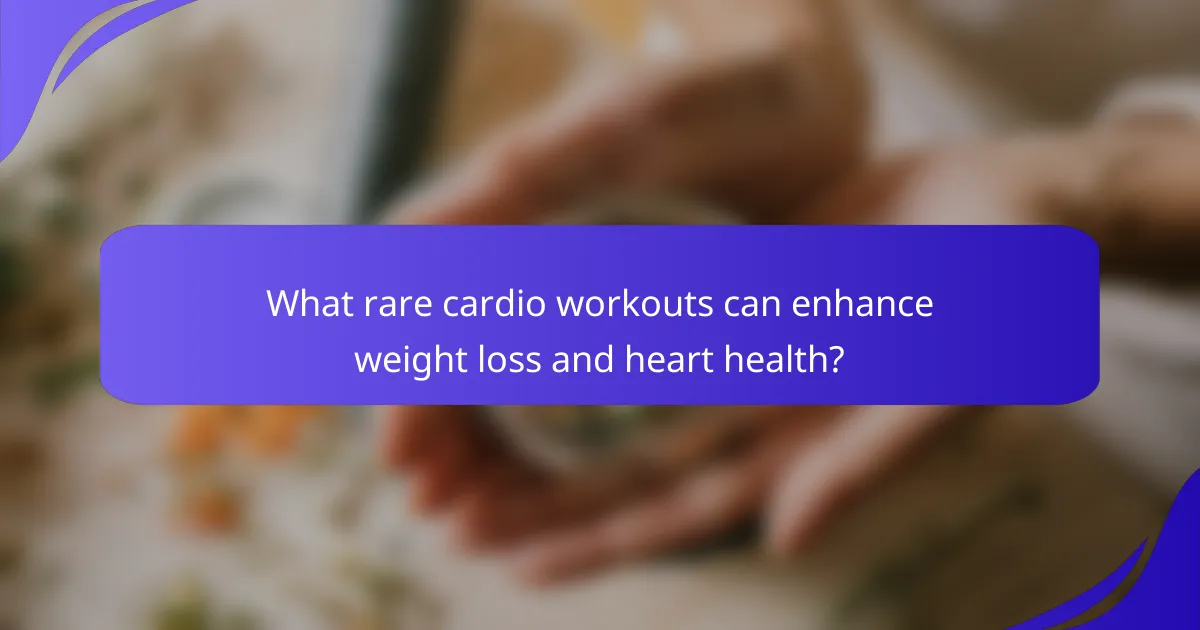
What rare cardio workouts can enhance weight loss and heart health?
High-intensity interval training (HIIT) and dance cardio are rare yet effective cardio workouts that promote weight loss and enhance heart health. HIIT involves alternating between intense bursts of activity and short recovery periods, maximizing calorie burn in minimal time. Dance cardio combines rhythmic movements with aerobic exercise, making workouts enjoyable while improving cardiovascular fitness. Both methods can elevate heart rate significantly, leading to improved endurance and metabolic benefits. Engaging in these workouts can contribute to sustainable weight loss and overall heart health.
What are the benefits of unconventional cardio methods?
Unconventional cardio methods offer unique benefits for weight loss and heart health. These workouts can enhance calorie burn, improve cardiovascular endurance, and increase workout enjoyment, leading to better adherence.
One notable method is high-intensity interval training (HIIT), which can burn more calories in a shorter time compared to traditional steady-state cardio. For example, a 20-minute HIIT session can burn as many calories as a 40-minute jog.
Another effective approach is dance-based workouts, which combine fun with fitness, making it easier to stick to a routine. Studies show that engaging in enjoyable activities can lead to increased physical activity levels.
Incorporating unconventional methods like rock climbing or jump rope can also provide full-body engagement, improving strength while enhancing cardiovascular fitness. These diverse workouts challenge the body in new ways, promoting overall health.
How can dance-based workouts contribute to fitness?
Dance-based workouts significantly enhance fitness by providing effective cardio training that promotes weight loss and improves heart health. These workouts elevate heart rate, burn calories, and engage multiple muscle groups, making them a fun and efficient exercise option. For instance, a 30-minute dance class can burn approximately 200-400 calories, depending on intensity. Additionally, dance workouts improve coordination and flexibility, contributing to overall physical health. Engaging in dance also fosters mental well-being by reducing stress and boosting mood, making it a holistic approach to fitness.

How do regional preferences influence cardio workout choices?
Regional preferences significantly shape cardio workout choices, impacting the effectiveness of weight loss and heart health strategies. Cultural attitudes, climate, and local resources influence popular activities. For instance, areas with warmer climates may favor outdoor running or cycling, while colder regions might lean towards indoor activities like spinning or aerobics. Additionally, community access to facilities and group classes can dictate preferences, encouraging social engagement in workouts. Understanding these regional variations helps tailor cardio programs to enhance participation and outcomes.
What are the most popular cardio workouts in different cultures?
Running, cycling, and dancing are popular cardio workouts across various cultures. In the United States, running is favored for its accessibility, promoting weight loss and heart health. In Brazil, samba dancing combines fitness with cultural expression, enhancing cardiovascular endurance. In Japan, aerobic exercises like group fitness classes are common, emphasizing community and health. In India, traditional forms like bhangra provide a rhythmic workout, blending culture with cardio benefits. Each workout reflects unique cultural values while supporting overall heart health and weight management.
How do seasonal changes affect cardio workout participation?
Seasonal changes significantly influence cardio workout participation. Weather conditions, such as temperature and daylight, affect motivation and accessibility.
In colder months, individuals may prefer indoor cardio options, reducing outdoor activities. Conversely, warmer seasons often encourage outdoor workouts, enhancing social engagement and enjoyment.
Research indicates that 30% of people decrease their workout frequency in winter, while summer sees a 20% increase in outdoor cardio activities.
Understanding these patterns helps individuals plan effective workout routines that align with seasonal shifts, ensuring consistency in weight loss and heart health goals.

What are the best practices for optimizing cardio workouts?
To optimize cardio workouts, focus on consistency, intensity, and variety. Incorporate high-intensity interval training (HIIT) to boost fat loss and improve heart health. Track your progress to maintain motivation and adjust your routine as needed. Prioritize proper warm-up and cool-down to prevent injuries.
How can one avoid common mistakes in cardio training?
To avoid common mistakes in cardio training, focus on proper form, gradual progression, and variety. Ensure you warm up before workouts to prevent injury. Many people neglect hydration, which is crucial for performance and recovery. Tracking your heart rate can help maintain optimal intensity levels for weight loss and heart health. Lastly, listen to your body to avoid overtraining, which can lead to burnout or injury.
What expert tips can enhance cardio workout results?
Incorporating expert tips can significantly enhance cardio workout results. Focus on interval training, which alternates between high and low intensity, maximizing calorie burn. Maintain a consistent workout schedule, aiming for at least 150 minutes of moderate-intensity cardio weekly. Utilize proper form and technique to prevent injuries and improve efficiency. Finally, track progress with metrics like heart rate and distance to stay motivated and adjust routines as needed.
How can nutrition support cardio workouts for weight loss?
Nutrition plays a crucial role in enhancing cardio workouts for weight loss. Proper fueling maximizes energy levels and supports recovery.
Consuming a balanced diet rich in whole foods boosts endurance during cardio sessions. Carbohydrates provide essential energy, while proteins aid muscle repair. For optimal results, aim for a diet with 45-65% carbohydrates, 10-35% protein, and 20-35% fats.
Hydration is another key factor. Staying well-hydrated improves performance and helps regulate body temperature. Aim for at least 2 liters of water daily, adjusting based on workout intensity.
Incorporating nutrient-dense snacks before and after workouts can enhance performance and recovery. Options like bananas or Greek yogurt offer quick energy and protein, respectively.
